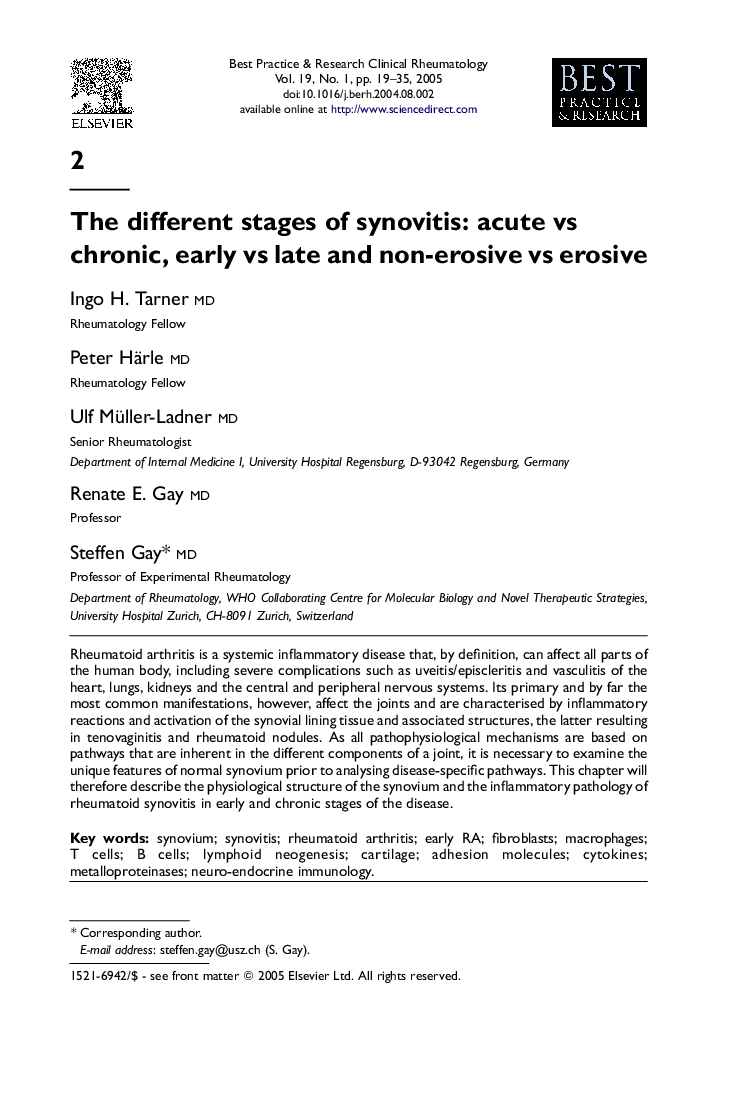| Article ID | Journal | Published Year | Pages | File Type |
|---|---|---|---|---|
| 9261991 | Best Practice & Research Clinical Rheumatology | 2005 | 17 Pages |
Abstract
Rheumatoid arthritis is a systemic inflammatory disease that, by definition, can affect all parts of the human body, including severe complications such as uveitis/episcleritis and vasculitis of the heart, lungs, kidneys and the central and peripheral nervous systems. Its primary and by far the most common manifestations, however, affect the joints and are characterised by inflammatory reactions and activation of the synovial lining tissue and associated structures, the latter resulting in tenovaginitis and rheumatoid nodules. As all pathophysiological mechanisms are based on pathways that are inherent in the different components of a joint, it is necessary to examine the unique features of normal synovium prior to analysing disease-specific pathways. This chapter will therefore describe the physiological structure of the synovium and the inflammatory pathology of rheumatoid synovitis in early and chronic stages of the disease.
Keywords
Related Topics
Health Sciences
Medicine and Dentistry
Immunology, Allergology and Rheumatology
Authors
Ingo H. (Rheumatology Fellow), Peter (Rheumatology Fellow), Ulf (Senior Rheumatologist), Renate E. (Professor), Steffen (Professor of Experimental Rheumatology),
